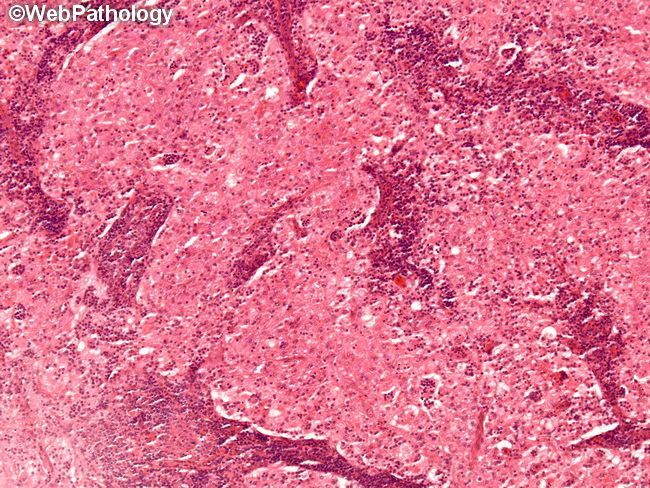Rosai-Dorfman Disease : Molecular Pathogenesis


Comments:
It appears that activating mutations in the RAS/RAF/MAPK/ERK signaling pathways may play a role in the pathogenesis of Rosai-Dorfman disease (RDD). Mutation analysis (see reference) of RDD using next-generation sequencing has shown mutually exclusive point mutations involving KRAS and MAP2K1 genes in one-third of cases. The status of BRAF was wild-type. All cases with MAP2K1 mutations showed p-ERK overexpression by immunohistochemistry, supporting the role of MAPK/ERK pathway activation. RDD patients with mutated genes were more likely to have the following features than unmutated cases: younger age at presentation, location in the head and neck region, and multifocal disease. Mutation status showed no correlation with clinical outcome. The rare cases of familial RDD have germline mutations in SLC29A3 gene which encodes an intracellular human equilibrative nucleoside transporter. Other conditions with this mutation include Faisalabad histiocytosis, H syndrome, and pigmented hypertrichosis in insulin-dependent diabetics. This image from nodal RDD shows total effacement of nodal architecture by massive dilatation of sinuses caused by sheets of histiocytes. Reference: Garces S. et al. Mutually exclusive recurrent KRAS and MAP2K1 mutations in Rosai-Dorfman disease. Modern Pathology (2017) 30, 1367-1377



